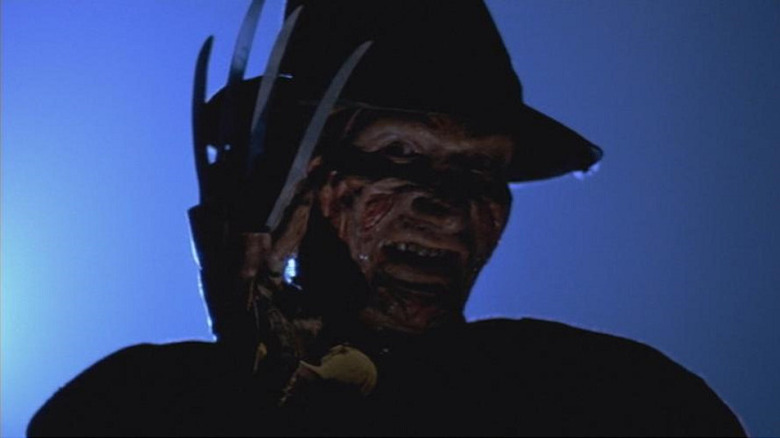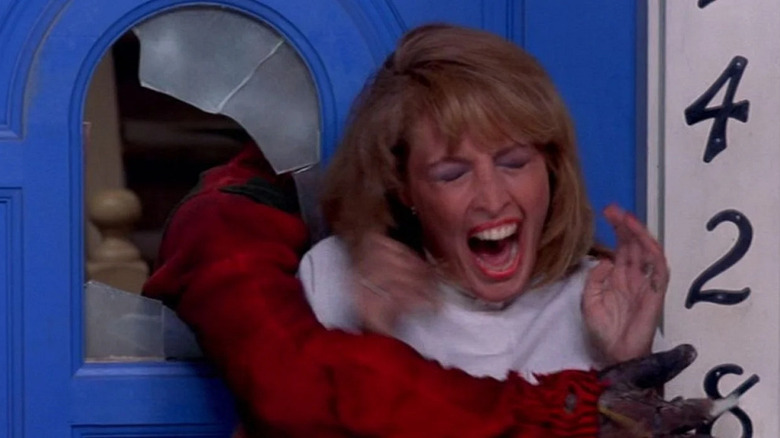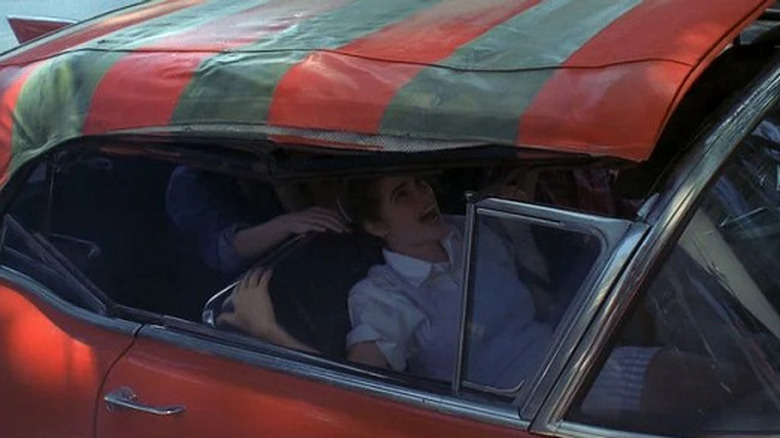This Was Wes Craven's Biggest Regret About A Nightmare On Elm Street
The twist ending has long been a staple of horror movies. Some are reveals that are meticulously layered through the story, like Veronika Franz and Severin Fiala's 2015 Austrian-German identity horror "Goodnight Mommy." A genre rife with unreliable narrators enable twists when the audience gets the full picture, as seen in the 2003 French Extreme gem "High Tension." Other endings play more like stings at the end of a nightmare, undermining the conclusion's sense of safety (Little Jason rising up at the end of "Friday the 13th") or a character's sense of reality, a trend that amped up after Brian De Palma's dreamy, then suddenly terrifying, ending of "Carrie" in 1976.
When Wes Craven crafted the reality-check slasher horror "A Nightmare on Elm Street" in 1984, the writer-director wanted to achieve the same unstable effect as the Elm Street kids' saga drew to a close. To be fair, New Line Cinema founder and producer Bob Shaye had the same endgame, albeit in a far different way than Craven had hoped for. Here's Craven's biggest regret about the film that launched a slasher icon and invaded the dreams of generations.
One, Two, Freddy's Coming For You...
For the uninitiated, "A Nightmare on Elm Street" concerns itself with a doomed quartet of horny teens, with a focus on Nancy Thompson (Heather Langenkamp), living on an unfortunate street in the fictional town of Springwood, Ohio. Their white picket fence ideal is shattered when a burn-scarred killer with a bladed glove invades their dreams and starts slicing and dicing. The following contains spoilers, but if you're concerned about spoilers in a nearly 40-year-old film, you shouldn't be on the internet.
Throughout the story, Craven takes pains to blur the line of demarcation between the dream world and reality, with scares engineered both to frighten and confuse. Example: Nancy falls asleep in class, gets chased by Kruger in a dream, burns her arm to awaken herself, and still has the burn on her arm upon awakening (and freaking out her classmates). Both Craven and Shaye wanted to lean into this blur between reality and unreality, but the ending we got was more of the studio's version than Craven's. At the climax, Nancy finds her power and learns that, like Pennywise the Clown, much of Freddy's power comes from the fear he inspires in those who don't dare utter his name. She calls him out for the punk he is, and appears to awaken as he disappears. Nancy says goodbye to her mother and heads off to school with all of her dead friends, just before Nancy's mother is ripped through the front door window of their "safe" home. You can't kill the boogeyman, as another slasher franchise says.
Three, Four, Better Lock Your Door...
In an oral history of the film, Shaye and Craven talk about the "Nightmare" finale, in which Shaye reveals that the "The Hills Have Eyes" director had penned a completely different ending where Heather defeats Freddy and goes off to school the next day, without the overt supernatural finale. "It's beautiful sunshine, and that's the end," Shaye told Vulture, "I'd seen 'Friday the 13th' and some other films, and there's always a zinger at the end. There was no zinger here."
Craven, feeling pressure from Shaye to create more of an opening for a sequel, found a middle ground:
I felt that the film should end when Nancy turns her back on Freddy and his violence — that's the one thing that kills him. Bob wanted to have Freddy pick up the kids in a car and drive off, which reversed everything I was trying to say — it suddenly presented Freddy as triumphant. I came up with a compromise, which was to have the kids get in the convertible, and when the roof comes down, we'd have Freddy's red and green stripes on it. Do I regret changing the ending? I do, because it's the one part of the film that isn't me.
Notably, Bob Shaye did get the explicit Freddy-at-the-wheel ending he wanted in a later sequel, with "The Bastard Son of 100 Maniacs" driving a bus full of innocents right into the end credits. While the ending of the original film wasn't quite what Craven envisioned, it set the standard for all "Nightmare on Elm Street" endings to come and had moviegoers thinking twice about going to sleep.


